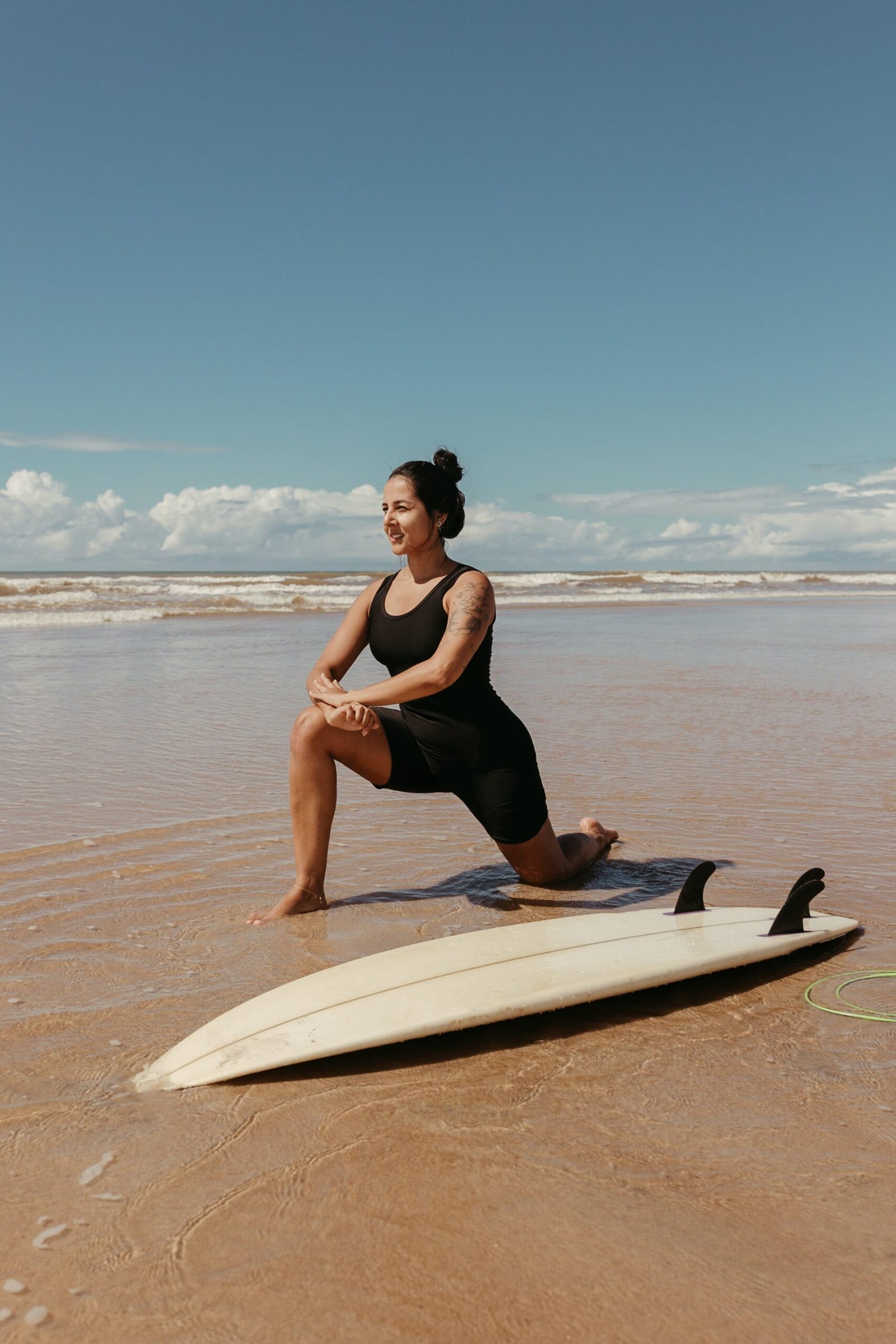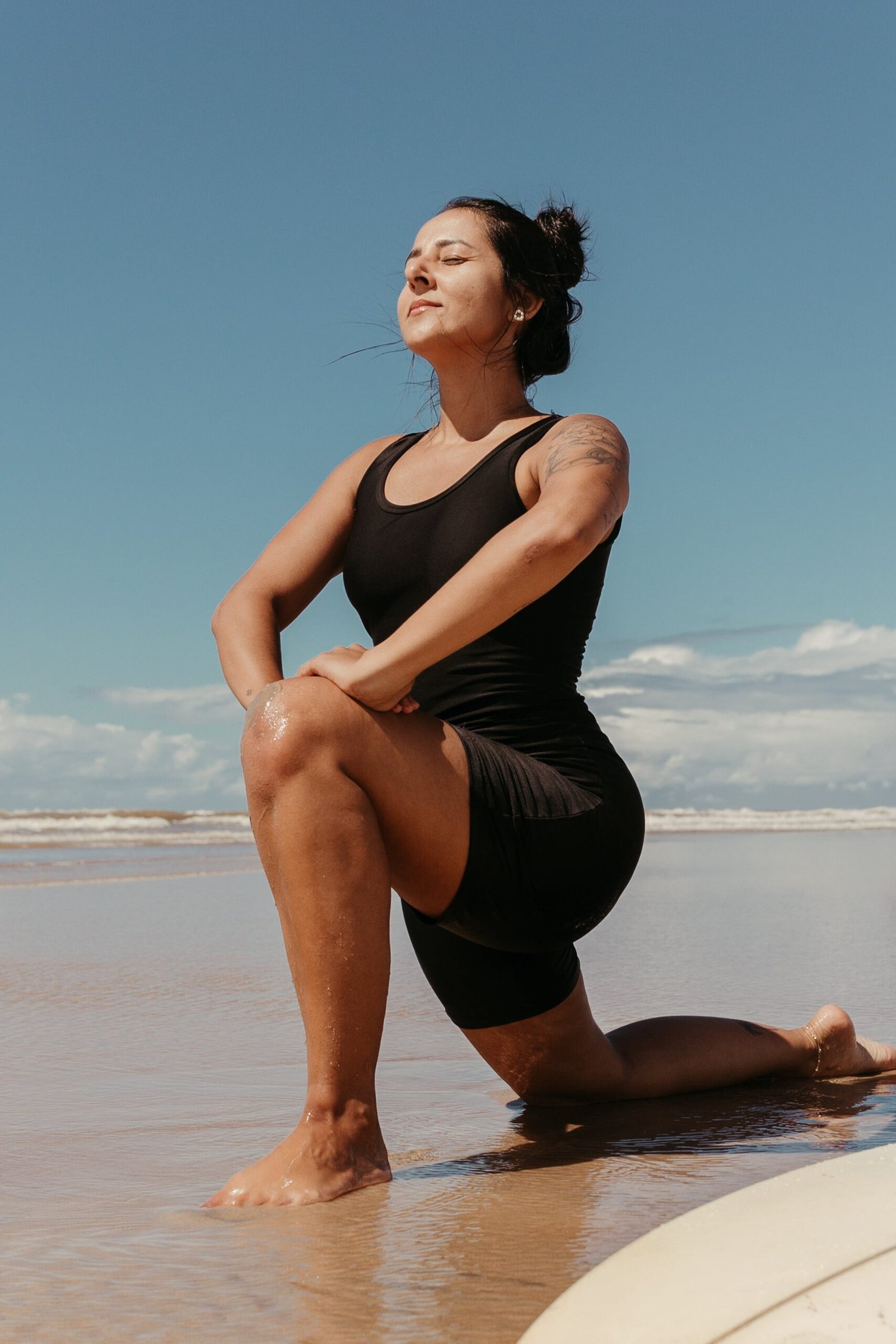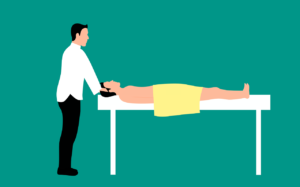
Imagine waking up in the morning, full of energy and excitement for the day ahead, only to find yourself confronted with a nagging sore neck. It’s an all-too-familiar struggle that many of us have experienced at one point or another. But fear not, because help is here! In this article, we will share with you five simple stretches that will provide much-needed relief to your sore neck. So prepare to say goodbye to that discomfort and hello to a newfound sense of comfort and relaxation.

Head Rotation
When it comes to relieving a sore neck, head rotation exercises can be incredibly beneficial. Not only do they help to loosen up tense neck muscles, but they also improve flexibility and range of motion. To perform a head rotation, start by sitting or standing with your spine straight and shoulders relaxed. Gently rotate your head to the right, bringing your chin towards your shoulder. Hold this position for a few seconds, feeling a gentle stretch in your neck. Then, slowly rotate your head to the left side, again holding the stretch for a few seconds. Repeat this exercise several times on each side, ensuring that you move within a comfortable range of motion.
Neck Tilt
Another effective stretch for relieving neck discomfort is the neck tilt. This involves tilting your head to the side, allowing the muscles on one side of your neck to stretch and lengthen. To perform a right tilt, start by sitting or standing upright. Slowly tilt your head to the right side, aiming to bring your right ear towards your right shoulder. You should feel a gentle stretch along the left side of your neck. Hold this position for a few seconds before returning to a neutral position. Repeat on the left side to stretch the right side of your neck. Remember to perform these tilts within a comfortable and pain-free range of motion.
Shoulder Shrug
Often, neck discomfort can be a result of tension in the shoulders. One simple and effective way to release this tension is through a shoulder shrug. To perform a regular shoulder shrug, start by sitting or standing with your arms relaxed at your sides. Slowly lift both shoulders up towards your ears, as if you are trying to touch them. Hold this shrugged position for a few seconds before releasing and bringing your shoulders back down to a relaxed position. Repeat this movement several times, allowing the tension in your shoulders to melt away.
Additionally, you can try a shoulder roll to further relieve tension in this area. Start in the same position as the regular shoulder shrug. Instead of simply lifting your shoulders up and down, this time, roll them backwards in a circular motion. Imagine drawing circles with your shoulders, moving them in a smooth and controlled manner. After a few backward circles, switch directions and roll your shoulders forward. This exercise helps to relax the muscles surrounding the neck and shoulders, providing further relief for a sore neck.
Chin Tuck
A commonly overlooked stretch for neck pain is the chin tuck. This exercise helps to strengthen the muscles at the front of your neck and correct poor posture, which can contribute to neck discomfort. To perform a chin tuck, start by sitting or standing with your spine straight and shoulders relaxed. Gently retract your chin, as if you are trying to create a “double chin.” Hold this position for a few seconds before releasing. Repeat this exercise several times, ensuring that you are engaging the muscles at the front of your neck.

Upper Back Stretch
Often, pain in the neck can be interconnected with tension in the upper back. By stretching the muscles in this area, you can relieve pressure on the neck and promote overall relaxation. One effective stretch for the upper back is the backward stretch. Start by standing with your feet shoulder-width apart. Interlace your fingers and extend your arms in front of you, palms facing away from your body. As you inhale, round your upper back and reach forward, feeling a stretch in your upper back and between your shoulder blades. Exhale as you slowly bring your arms back, opening up your chest and elongating your spine. Repeat this stretch several times, focusing on the connection between your upper back and neck.
For a sideways stretch to target the sides of your upper back, stand with your feet hip-width apart. Extend your right arm over your head, reaching towards the left side. Keep your left arm relaxed at your side. Gently lean your upper body to the left side, feeling a stretch along the right side of your upper back. Hold this position for a few seconds before returning to a neutral position. Repeat on the other side to stretch the left side of your upper back. This sideways stretch helps to release tension and improve mobility in the upper back, ultimately relieving strain on the neck.
Neck Stretch
To specifically target the neck muscles and alleviate any soreness, neck stretches are essential. These stretches help to increase flexibility, reduce tightness, and improve overall neck function. To perform a right side stretch, begin by sitting or standing tall with your shoulders relaxed. Gently tilt your head to the right, aiming to bring your right ear towards your right shoulder. You should feel a gentle stretch along the left side of your neck. Hold this position for a few seconds before returning to a neutral position. Repeat on the left side to stretch the right side of your neck. Remember to perform these stretches within a comfortable range of motion, without causing any pain or discomfort.
For a backward neck stretch, start in the same position as the previous stretch. Tilt your head backward, aiming to bring the back of your head towards your upper back. You should feel a gentle stretch along the front of your neck. Hold this position for a few seconds before returning to a neutral position. Only stretch as far as is comfortable for you, avoiding any strain or pain in the neck muscles.
To perform a forward neck stretch, start by sitting or standing with your spine straight and shoulders relaxed. Gently lower your chin towards your chest, allowing the back of your neck to lengthen. You should feel a stretch along the back of your neck. Hold this position for a few seconds before returning to a neutral position. Repeat this stretch several times to relax and release tension in the neck muscles.

Upper Trapezius Stretch
The upper trapezius is a large muscle that extends from the back of your head, down your neck and upper spine, and attaches to your shoulder blade. When this muscle becomes tight, it can contribute to neck discomfort. Stretching the upper trapezius can provide relief and help reduce soreness in the neck. To perform a right-side stretch, sit or stand with your spine straight and shoulders relaxed. Take your right hand and place it on the left side of your head, gently pulling your head towards your right shoulder. You should feel a stretch on the left side of your neck and upper trapezius. Hold this position for a few seconds before releasing. Repeat on the opposite side to stretch the right side of your neck and upper trapezius.
Levator Scapulae Stretch
The levator scapulae is a muscle located at the back and side of the neck. When it becomes tight or strained, it can contribute to neck pain and stiffness. Stretching the levator scapulae can help alleviate these symptoms and improve neck mobility. To perform a right-side stretch, sit or stand with your spine straight and shoulders relaxed. Take your right hand and place it gently behind your back, reaching towards your left hip. Tilt your head to the right side, aiming to bring your right ear towards your right shoulder. You should feel a stretch along the left side of your neck and upper back. Hold this position for a few seconds before releasing. Repeat on the opposite side to stretch the right side of your neck and upper back.
Sternocleidomastoid Stretch
The sternocleidomastoid is a long muscle that runs along each side of your neck. When it becomes tight or overworked, it can contribute to neck discomfort. Stretching the sternocleidomastoid helps to release tension and improve flexibility in the neck. To perform a right-side stretch, sit or stand with your spine straight and shoulders relaxed. Gently turn your head to the right, aiming to bring your chin towards your right shoulder. You should feel a stretch along the left side of your neck. Hold this position for a few seconds before returning to a neutral position. Repeat on the left side to stretch the right side of your neck. Remember to perform these stretches within a comfortable range of motion, without straining or causing any pain.
Pectoral Stretch
The pectoral muscles, located in the chest area, can often contribute to neck discomfort when they become tight or shortened. Stretching the pectoral muscles can help alleviate this tension and relieve pressure on the neck. Two effective stretches for the pectoral muscles are the chest stretch and the shoulder stretch.
For the chest stretch, start by standing near a wall or doorway. Place your right hand on the wall or frame, at about shoulder height. Gently rotate your body to the left, allowing your chest to open up. You should feel a stretch in the front of your right shoulder and chest. Hold this position for a few seconds before releasing. Repeat on the opposite side to stretch the left side of your chest.
To perform a shoulder stretch, start in the same position as the chest stretch. This time, raise your right arm so that it is parallel to the ground. Bend your right elbow at a 90-degree angle, so that your forearm is pointing upward. Gently rotate your body to the left, allowing your shoulder to rotate backward. You should feel a stretch in the front of your right shoulder. Hold this position for a few seconds before releasing. Repeat on the opposite side to stretch the left side of your shoulder.
By incorporating these stretches into your daily routine, you can help alleviate a sore neck and promote overall neck health. Remember to listen to your body and only stretch within a comfortable range of motion. If you experience any pain or discomfort during these exercises, it is important to consult with a healthcare professional. With consistent practice, you can keep your neck feeling strong, flexible, and pain-free.







